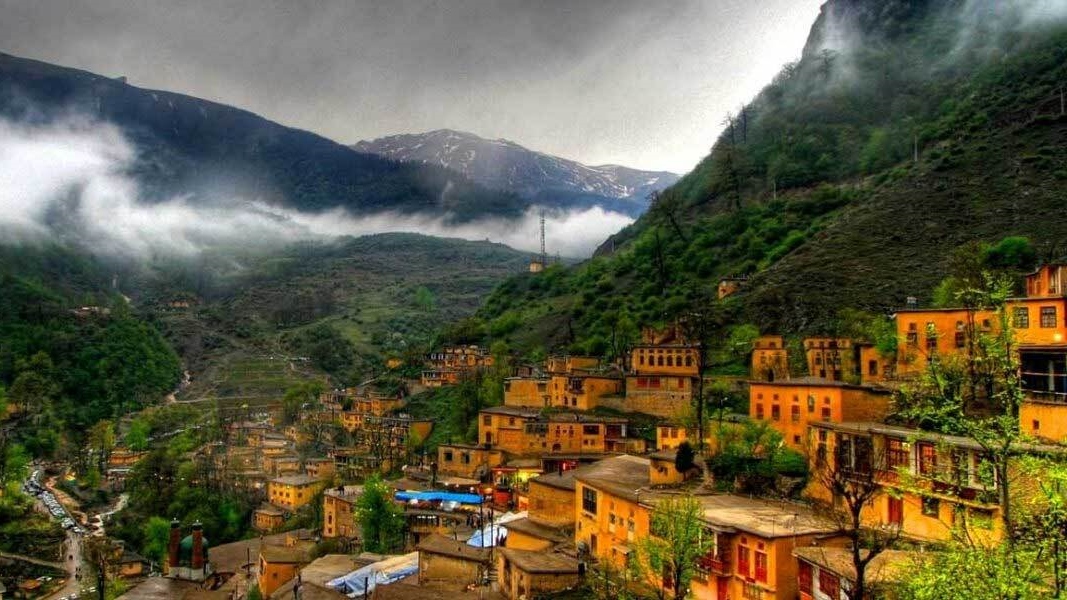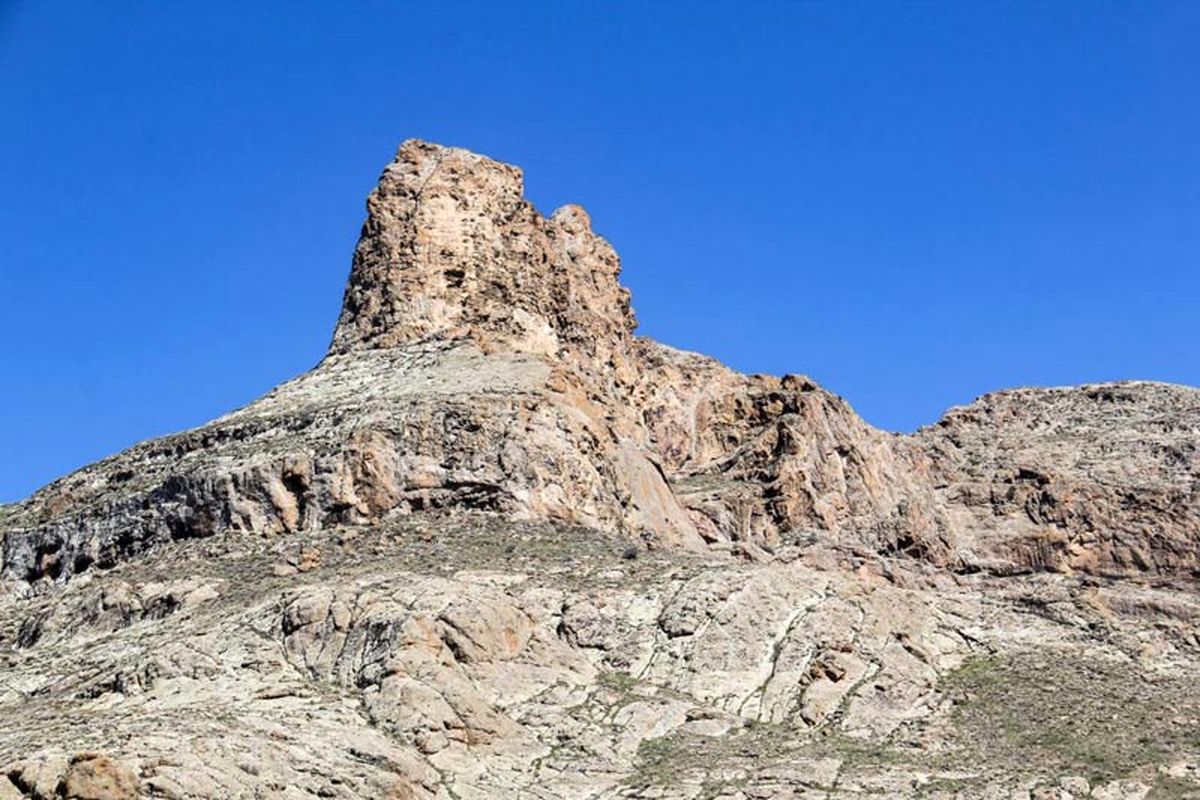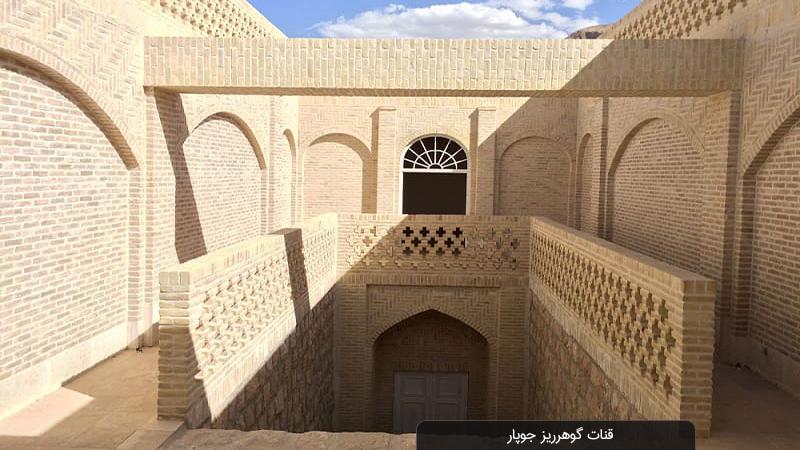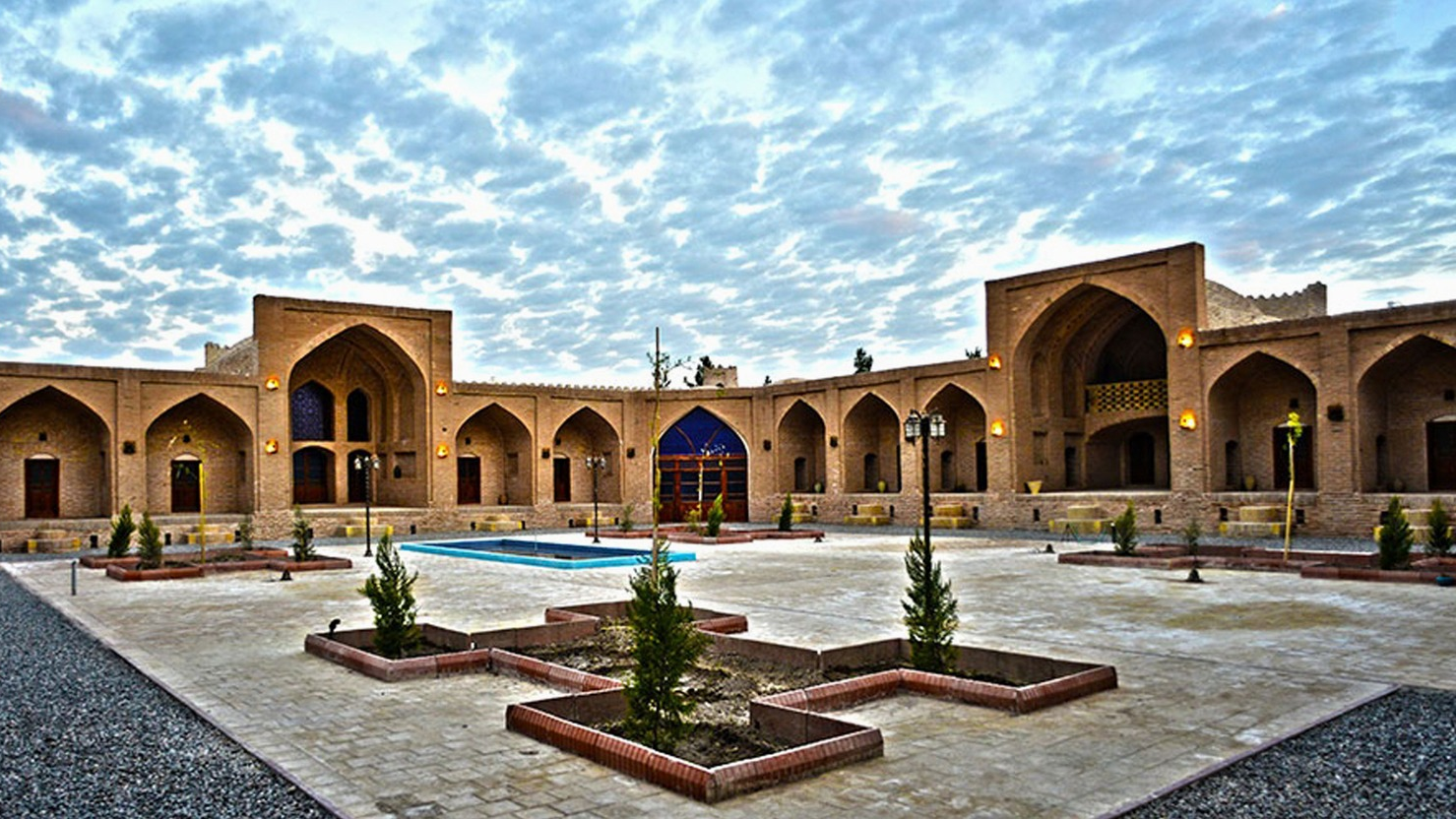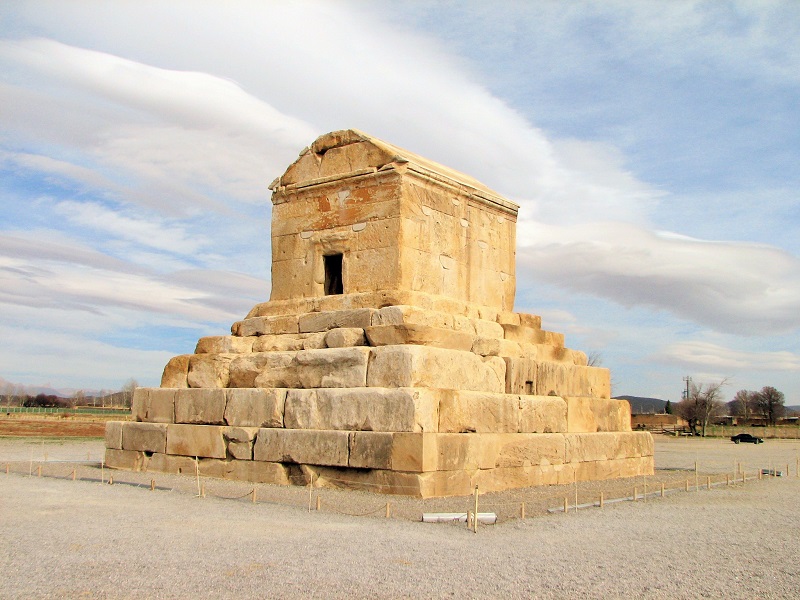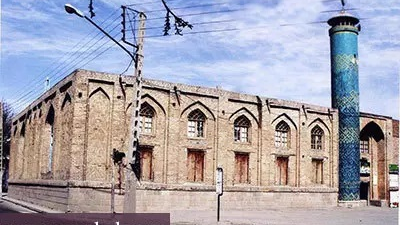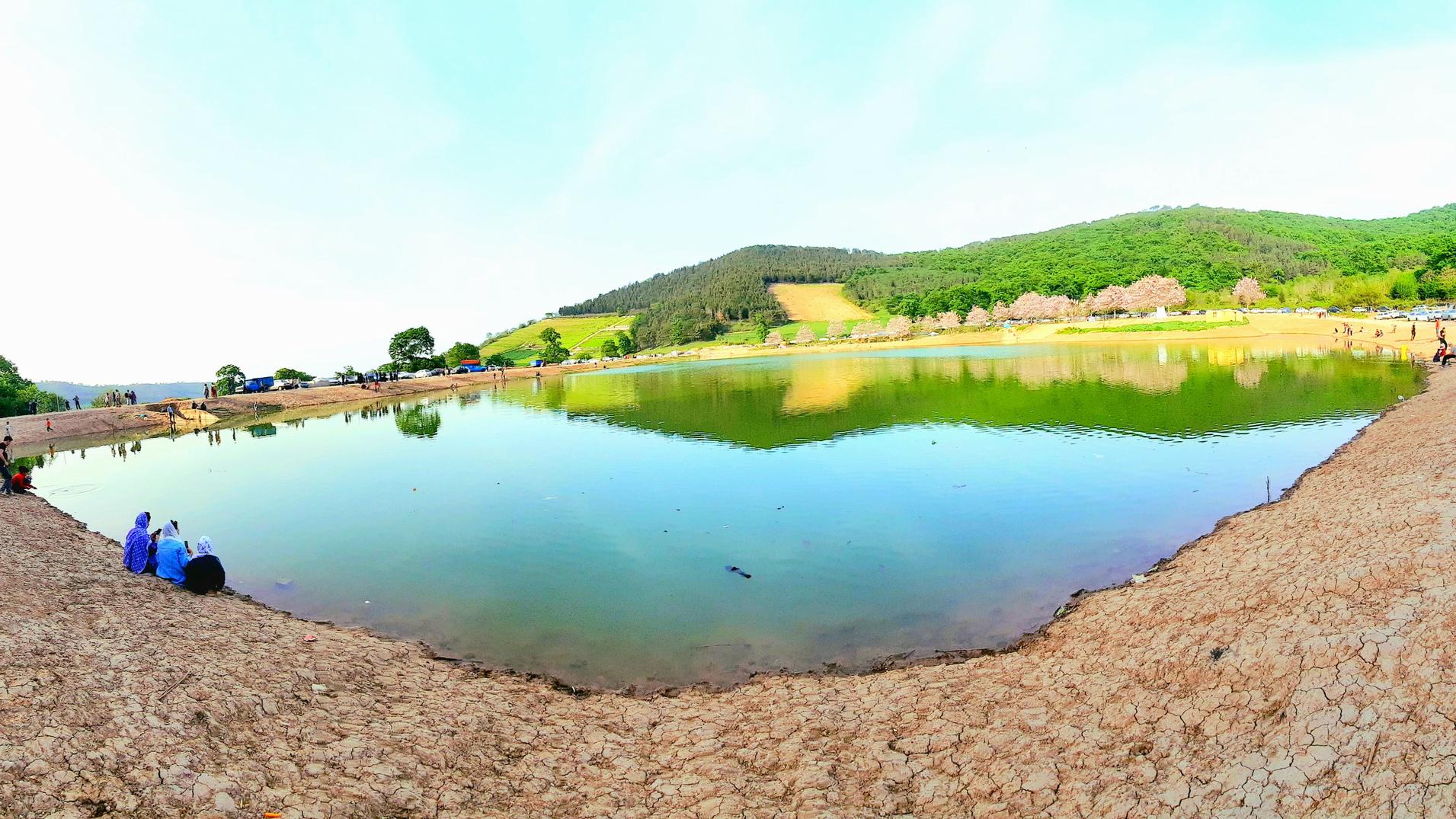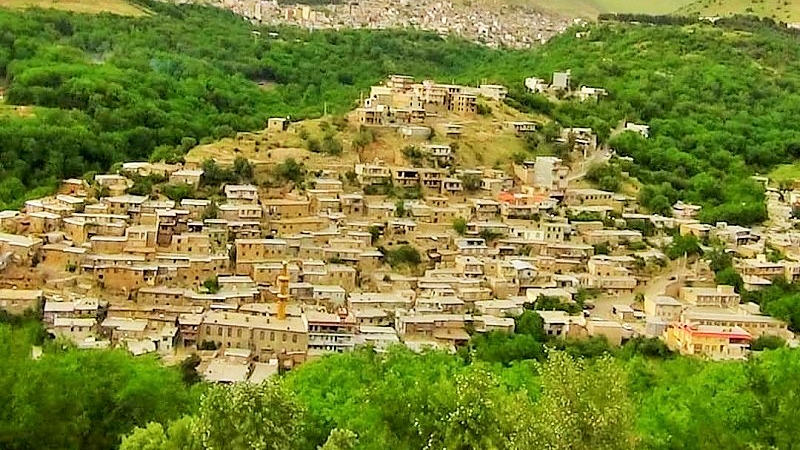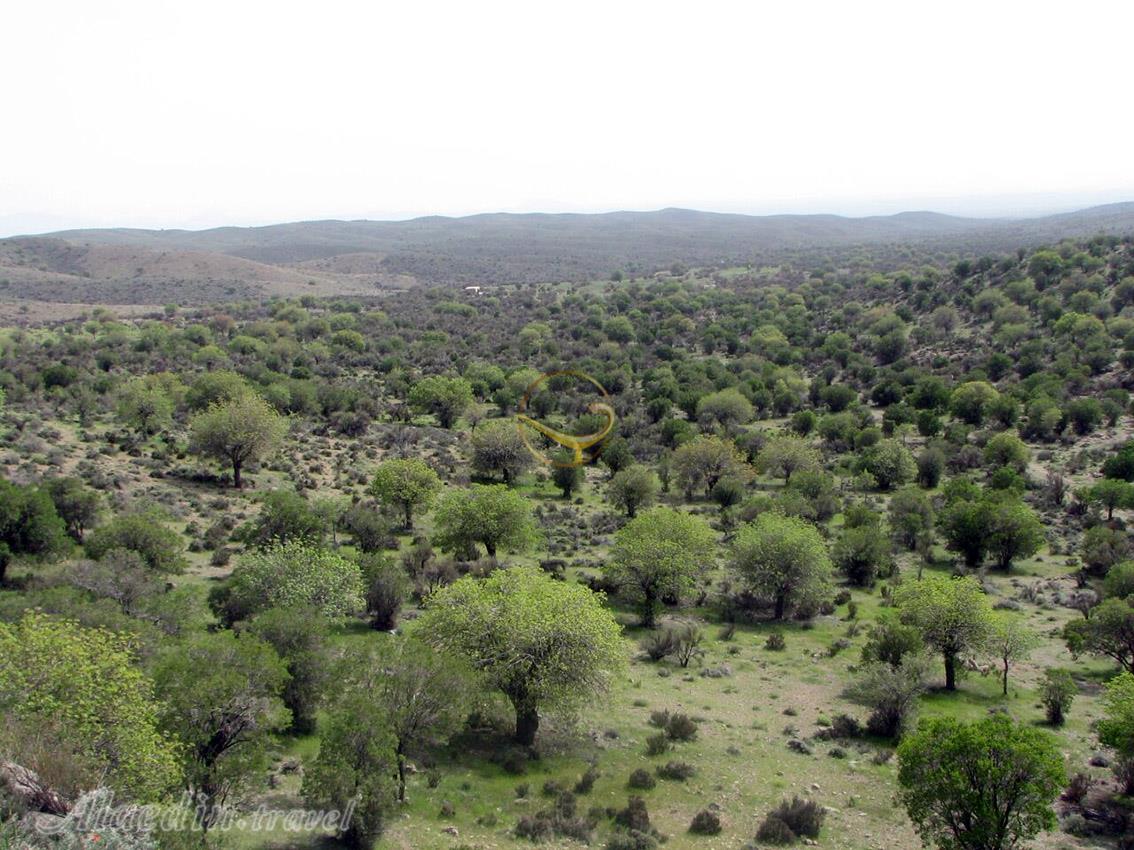
Ka’ba-ye Zartosht
Located on the road from Shiraz to Isfahan, the historic site of Naghs-e Rostam houses several historical works belonging to the 12th century BC up to the middle of the 7th century CE. Ka’ba-ye Zartosht also called the Cube of Zoroaster is one of these historical works, which is located next to the tomb of Achaemenid kings and Elamite petroglyphs, and is of great historical importance.
This monument was structured during the Achaemenid era, and although there is no information about its nomenclature, it was called “Bonkhanak” in the Sassanid era. The name it is called today is rather new and has been given to it in the 14th century CE.
Architecture
This square-shaped stone building with several steps is located at a distance of 46 meters from the mountain and has been built using white limestone. The stones were brought from Mount Sivand and placed on top of each other without using mortar. Including the stairs, this building is 14.12 meters high, each side of its base is 7.3 meters, and its only entrance is 1.75 cm high and 87 cm wide. A heavy double door and staircase of 30 steps lead to the inner part of the chamber.
There are four blind windows on each side of the building and in order not to make the building look monotonous, double-edged niches made of one or two dark gray stones and small rectangular pits have been made in it. The proportions of the building, the sizes, the lines, and the exterior of the Ka’ba-ye Zartosht have made it quite unique.
What Was Ka’ba-ye Zartosht Used for?
There are different opinions about the usage of this monument, and this issue has always been a subject of controversy. What is the cause of these disagreements is the existence of a similar building in Pasargad, whose usage was probably similar to that of Ka’ba-ye Zartosht.
According to some archaeologists, Ka’ba-ye Zartosht is a tomb, but some others believe that it was a fire temple that was used for religious rituals and ceremonies. Another group of experts consider this building to be the place where religious documents and Avesta were preserved. The fourth theory is that it used to be Anahita’s shrine and that the statue of this goddess was kept in it.
The Inscriptions of Ka’ba-ye Zartosht
There are three inscriptions on the northern, southern, and eastern walls of the building in three languages of Sasanian Pahlavi, Parthian Pahlavi, and Greek. These inscriptions, which were written in the Sasanian era attributed to Shapour I (240 to 270 CE) and Mobad Kartir who was a high-ranking Zoroastrian cleric in the 3rd century CE and was a contemporary of seven Sassanid kings (from Ardeshir Babakan to Narseh). He is considered very important in promoting Zoroastrianism.
Shapour’s Inscription
In his inscription, Shapour had first introduced himself and mentioned the regions he ruled over. He has then mentioned the wars between Iran and Rome, the defeat and death of Gordian III, and his battle with the Romans.
Among the interesting cases mentioned in Shapour’s inscription is the capture of Roman Caesar by Shapour himself. The establishment of many fire temples and calling everyone to participate in charity works are other issues mentioned in this inscription, which is very important from a historical point of view and is considered one of the first-hand sources of Sasanian history. This inscription also mentions the extent of Iran’s borders at that time.
Kartir’s Inscription
This inscription is written in 19 lines and is located under Shapour’s inscription. The inscription was written during the reign of Bahram II, around 280 CE. In this inscription, Kartir introduces himself and mentions his positions during the period of the previous kings. He also mentions his struggle against other religions and people who had apostatized from the religion of Zoroastrianism. Establishing fire temples, allocating endowments to them, reforming deviant mobads, and the lands that were conquered by Iran during the time of Shapour I, are other things mentioned in his inscription.
This historical work was inscribed with the number 21 in the list of Iran’s national heritage in 1931.
Referred to as Ka’ba-ye Zartosht since the 14th century CE, this monument was structured during the Achaemenid era and was called “Bonkhanak” in the Sassanid era.
| Name | Ka’ba-ye Zartosht |
| Country | Iran |
| State | Fars |
| City | Marvdasht |
| Type | Historical |
| Registration | National |

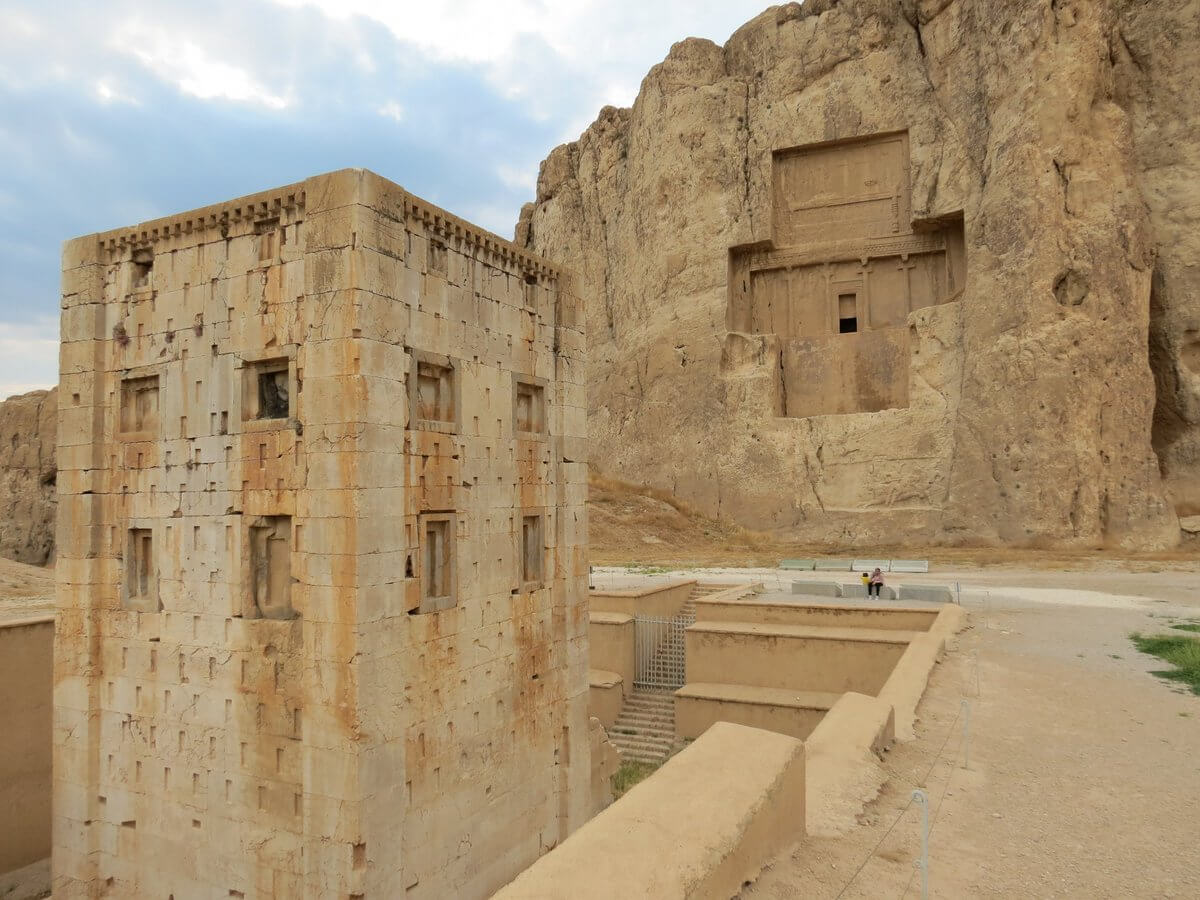
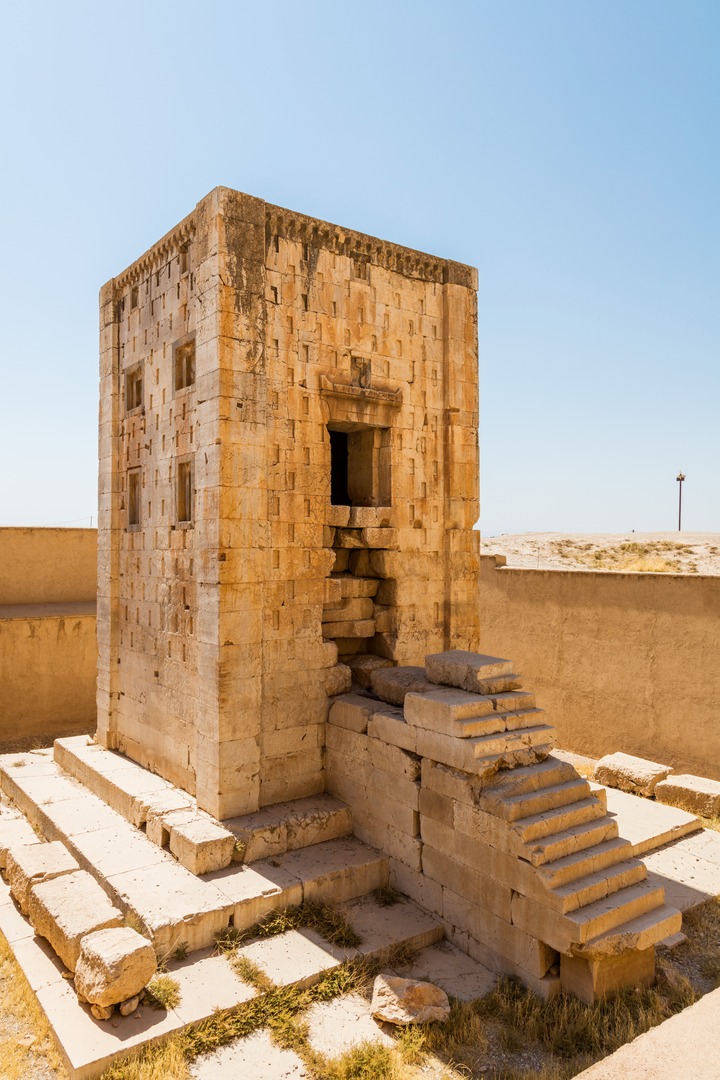



Choose blindless
Red blindless Green blindless Blue blindless Red hard to see Green hard to see Blue hard to see Monochrome Special MonochromeFont size change:
Change word spacing:
Change line height:
Change mouse type:

